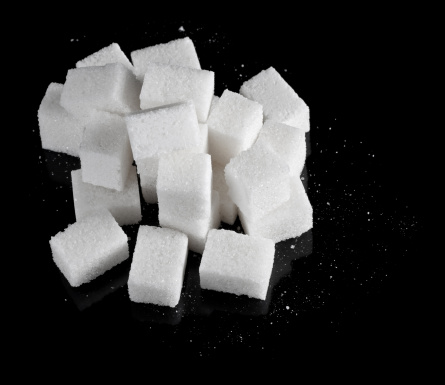What you need to know about sugar

The health hazards of excessive sugar consumption are well-known, yet despite warnings about how eating too much sugar can lead to obesity, Type 2 diabetes and other health conditions, Americans consume 16 pounds of the white stuff each year, according to the U.S. Department of Agriculture.
Sugar is added under a variety of names such as high fructose corn syrup, pure cane sugar, sucrose, lactose and glucose solids, to name a few. This can make it challenging for consumers to know if sugar is hidden in their food.
While both glucose and fructose are types of sugar, they affect the body differently.
“There is a big difference,” says Dr. Umang Patel, internal medicine physician at Advocate Good Samaritan Hospital in Downers Grove, Ill. “Even though they all have similar calories per gram, they are processed differently by our body.”
Fructose causes more insulin resistance which can increase an individual’s risk for heart disease and diabetes compared to glucose, according to a University of California at Davis study. In a different study, researchers found that fructose also led to higher craving for food compared to glucose.
“To simplify it, fructose and related sweeteners lead to more dangerous belly fat collection that is linked to stroke and heart attacks as compared to glucose,” says Dr. Patel. “More studies are needed to establish the facts versus myths.”
Fructose is commonly found as high fructose corn syrup, fruit juices, soda and desserts, while glucose is more common in foods containing complex carbohydrates.
Fruits are typically high in glucose. For example, fruits high in glucose include bananas, grapes, kiwi, cherries and persimmons. Dried fruits are particularly high in glucose because of their low water content.
Related Posts
Comments
2 Comments
About the Author
health enews staff is a group of experienced writers from our Advocate Health Care and Aurora Health Care sites, which also includes freelance or intern writers.


















It’s important to keep sugar consumption in perspective. According to USDA data, sugar actually plays a minor role in excess calories in the American diet since the 1970’s. During the past four decades as obesity rates climbed, the American food supply added an additional 445 calories per day. While fats, oils and starches comprised 376 (84%) of these additional calories, sugar – from all sources – played a relatively minor role, contributing only 34 calories (9%). Calories from soft drinks played an even smaller role in this increase. As CDC data shows, foods – not beverages – are the number one source of sugars in the American diet. In other words, attempts to pin the blame on high fructose corn syrup (HFCS) or sugar-sweetened beverages for complex health issues is inaccurate and unproductive. All calories count and physical activity is key when it comes to optimal health, and preventing and mitigating health issues.
-American Beverage Association
What the beverage group wants you to forget are all those studies that show high-fructose corn syrup in soda actually encourages people to drink more soda and eat more calories. Empty calories. Just citing percentages of calories consumed from soda or sugar really doesn’t tell you much — it’s distraction with irrelevant statistics. Nice try, dude, but you flunked.